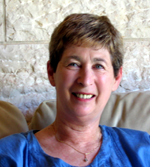By Dorothea Shefer-Vanson

MEVASSERET ZION, Israel – Reading the recent review of the Chula Vista production of the play, The Diary of Anne Frank, I was taken back twenty-five years, to the year I spent in Lincoln, Nebraska, where my husband was teaching at the University. The Cliff’s Notes publisher of booklets intended to help American students get to grips with works of literature was located in Lincoln at that time. The editor had decided to publish a companion booklet to Anne Frank’s diary and felt that a Jewish woman should write it. He first approached the rabbi’s wife, but she had other commitments and gave them my name. So it came about that I was asked to write the Cliff’s Notes booklet to accompany Anne Frank’s Diary, i.e., to summarize ‘the story’ and provide additional material.
I went into the subject very seriously, and did a fair amount of research, which wasn’t quite as easy in those far-off pre-internet days as it is today. I was amazed to find that American high-school students needed assistance in order to read the book, but I suppose I shouldn’t have been. I also found it somewhat strange that I was expected to provide an outline of each of the ‘characters’ in the book, but had to do so to comply with the Cliff’s Notes formula. Naturally, I also tried to gave the historical background, albeit in an extremely compressed form. My main innovation, apart from summarizing the course of events described in the diary, was to try and trace what happened to Anne and the others after they had fallen into the hands of the Nazis.
The story of Anne Frank obtained widespread renown partly because it describes the experiences of an ordinary girl in extraordinary circumstances, and partly because it is a well-written and touching account of a life that was so full of promise and ended so tragically and prematurely.
In preparing the booklet I was helped by severable books, some by Holocaust survivors, others by scholars who had undertaken historical, psychological, or philosophical studies of the period, but particularly by the thorough research undertaken by Ernst Schnabel and published as Anne Frank: A Portrait in Courage by Harbrace in 1958, a copy of which was lent to me by a member of the Lincoln Jewish congregation. Schnabel traced and interviewed the Dutch helpers who had witnessed the arrest and deportation of the Frank family from their hiding-place in the secret annex, or had been incarcerated in one or another of the various concentration camps to which Anne and her sister Margot were sent.
When the Gestapo discovered the little group in August 1944, Schnabel writes, no one acted hysterically or violently. They simply put together a few basic possessions and left with their captors. They were taken to Gestapo headquarters in Amsterdam, kept there for a few days, then sent to the Westerbork reception camp. They were relatively cheerful as the whole group was together and they travelled on a regular passenger train. Throughout the journey Anne remained glued to the window, taking in the summer scenery. After all, she hadn’t been outside for two years. After a month at Westerbork, where conditions were bad but not unbearable, all the members of the group were crowded together with a thousand other Jews into sealed railway cattle cars and sent to Auschwitz. The journey took three days. Upon arrival the women were separated from the men and marched to the camp, where their heads were shaved. A woman who was with Anne at that time said ‘You could see her beauty in her eyes.’
After enduring Auschwitz for some months, Anne and Margot ‘passed’ the selection process but their mother did not. She was sent to the gas chambers, while the two sisters were deported once again, this time to the Belsen concentration camp, once again on a long journey in sealed cattle cars. There Anne met up with her schoolfriend, Lies, who had been placed with her family in a separate section for ‘neutral foreigners,’ where she was able to receive packages through the Red Cross Organization. Hearing that a group had arrived from Auschwitz she managed to make contact with Anne across the barbed wire fence that separated them. ‘She was in rags,’ Lies said. “I saw her emaciated, sunken face in the darkness… We cried and cried.”
Both in Auschwitz and in Belsen the conditions were abominable and there is no doubt that Anne was both a witness to and a victim of the brutality, horror and desolation around her. Her friend, Lies, attempted to get some food across the fence to her, but another inmate stole the package from Anne. It was winter, everyone was freezing, starving, weak and prone to sickness. Anne’s sister, Margot, died of typhus in February 1945, followed by Anne a few days later, two months before the camp was liberated by the Allies. Auschwitz had been liberated by the Russians in January.
Writing the booklet was a difficult task for me, and the harrowing fate that befell Anne haunts me still today. But I hope my efforts have helped at least one youngster in Kansas, Georgia or Kentucky, for example, to gain a better understanding of the incomprehensible events that took place not so long ago and not so far away. And to make sure that nothing like them ever happens again.
*
Shefer-Vanson is a freelance writer and translator based in the Jerusalem suburb of Mevasseret Zion. She may be contacted at dorothea.shefer@sdheritage@cox.net